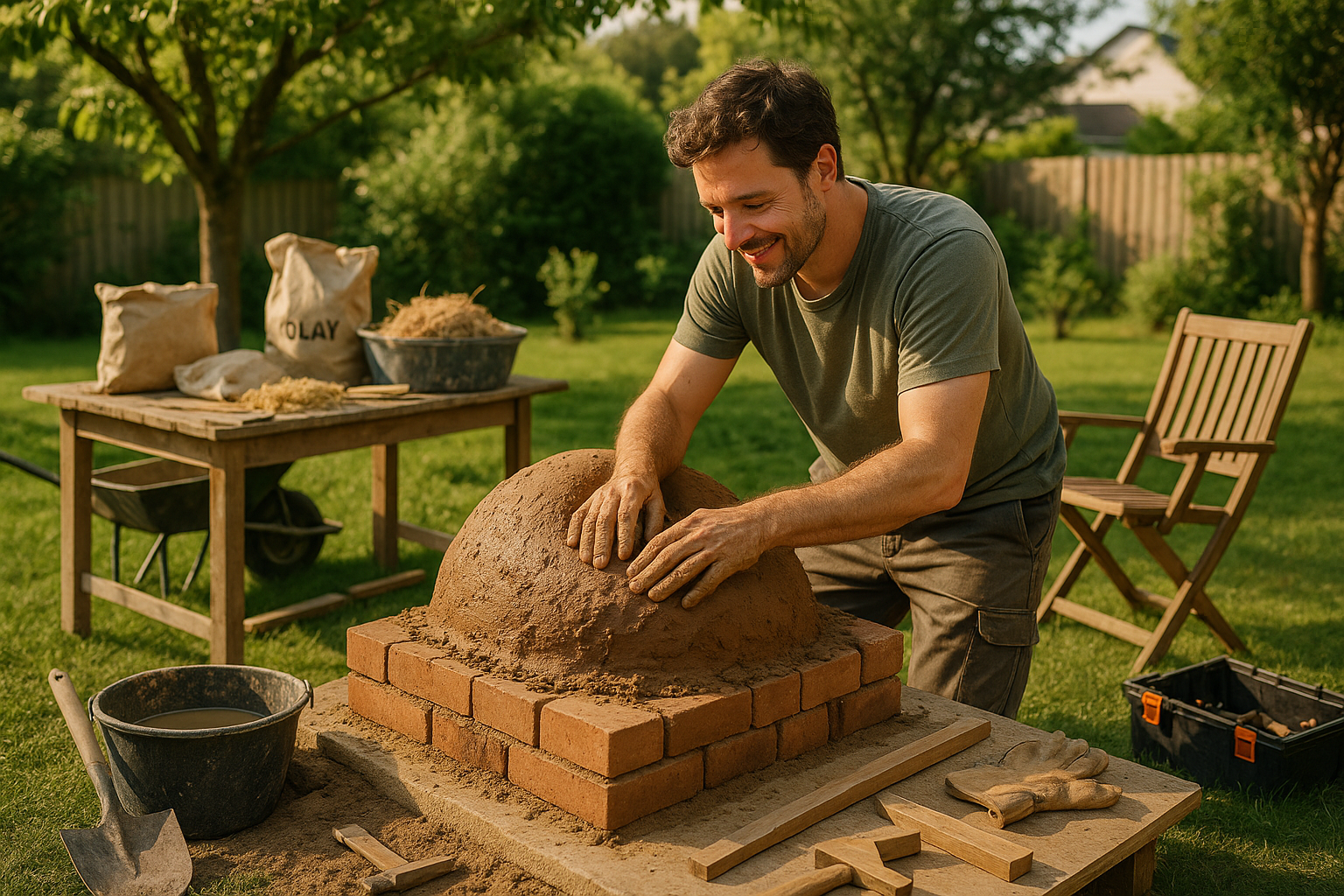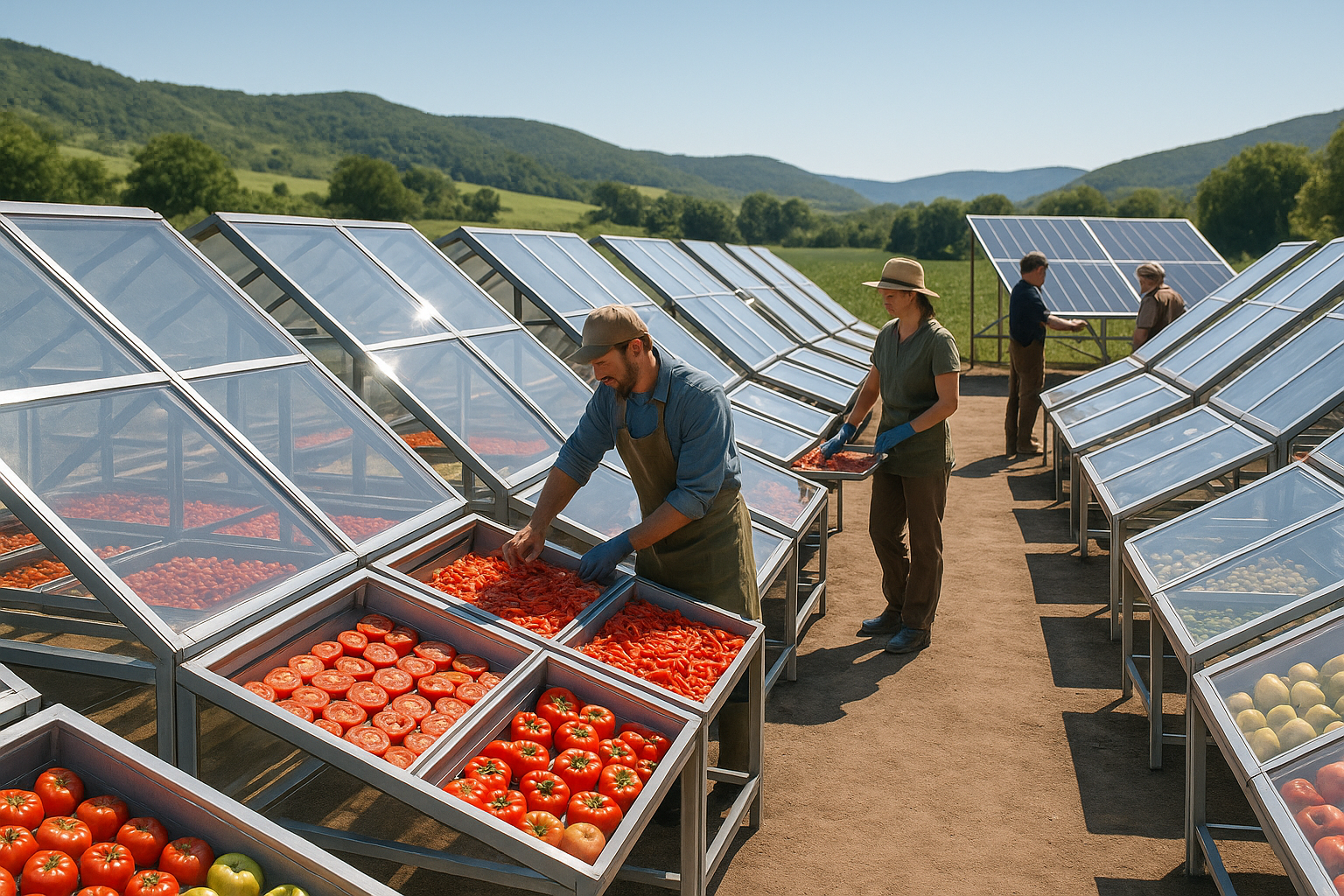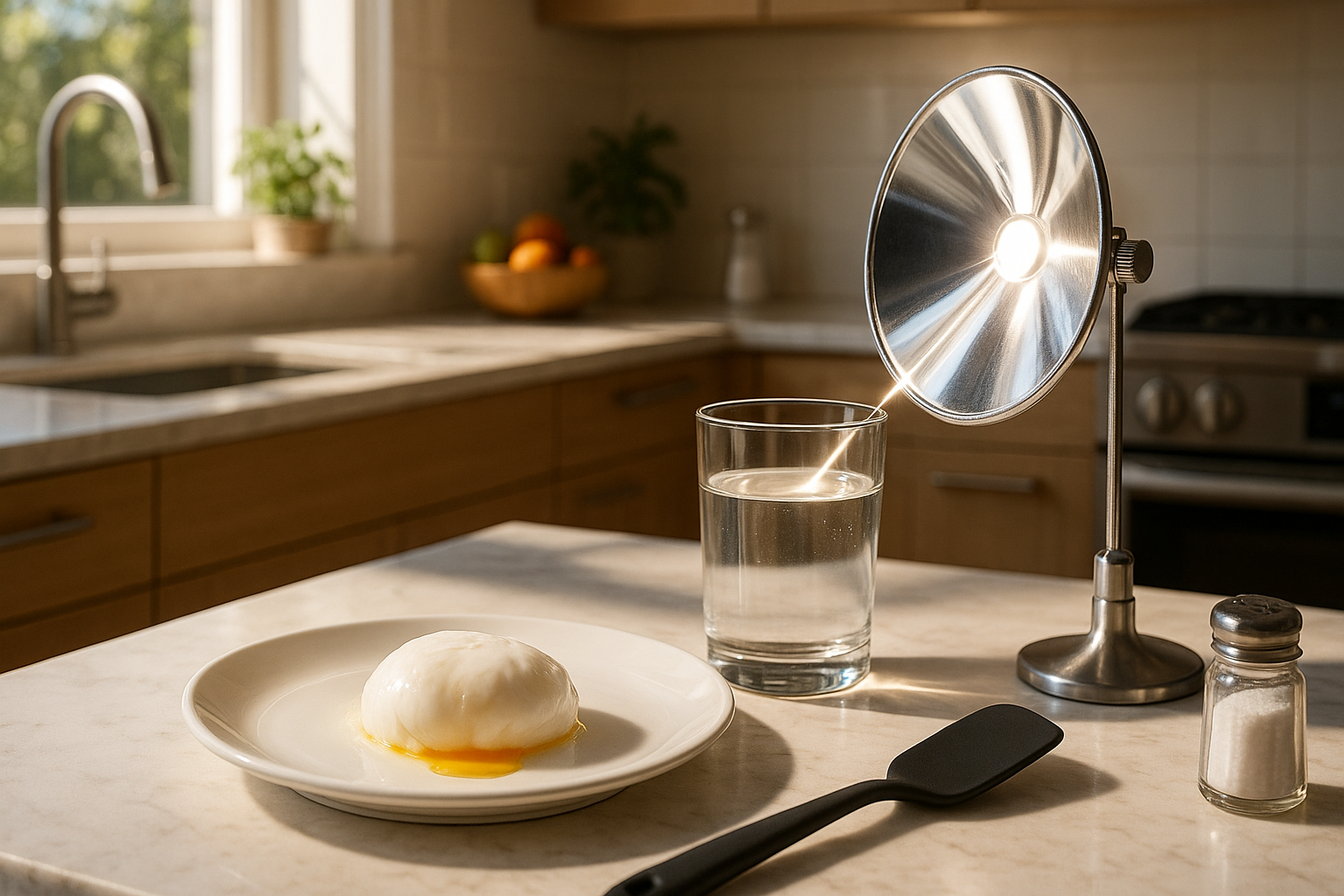Imagine the aroma of freshly baked bread wafting through your backyard, mingling with the earthy scent of clay and the gentle crackle of a wood fire. 🍞🔥 If you’ve ever dreamed of creating your own artisanal pizzas or rustic loaves with a touch of authenticity, then mastering the art of clay oven crafting might just be your calling. In this comprehensive guide, we’ll embark on a journey through the ancient yet surprisingly accessible world of clay oven building, transforming your outdoor space into a culinary haven.
Clay ovens, also known as cob ovens or earth ovens, have been used for centuries in various cultures around the globe. These traditional ovens are celebrated not only for their ability to retain and radiate intense heat, cooking food to perfection, but also for the unique flavors they impart. Whether you’re a seasoned baker or a curious DIY enthusiast, the process of building a clay oven can be as rewarding as the delicious meals it will eventually produce.
In the following sections, we will demystify the art of clay oven crafting, guiding you step-by-step through the process of building your own backyard oven. Our journey will begin with an exploration of the essential materials you’ll need, such as clay, sand, and straw, and how to source them sustainably. Understanding the properties of these natural materials and their significance in oven construction will set a solid foundation for your project.
Next, we’ll delve into the intricacies of designing your oven. From selecting the optimal location in your backyard to planning the oven’s dimensions, every decision plays a crucial role in the success of your clay oven. We’ll provide tips on how to ensure efficient airflow and heat retention, key factors that will elevate your baking experience to a professional level.
The heart of this guide lies in the hands-on process of construction. We’ll walk you through each stage, from creating a sturdy base to shaping the dome with your own hands. Expect to get your hands dirty as you mold and sculpt the clay, a tactile experience that connects you with ancient traditions. 👐 You’ll also learn about the importance of letting your oven cure properly, ensuring longevity and optimal performance.
Of course, no clay oven guide would be complete without a deep dive into the art of firing your oven. We’ll discuss the techniques for building and maintaining a wood fire, achieving the right temperature for various types of baking, and the satisfaction of watching your dough rise and crust to perfection. Whether you’re aiming to bake a batch of sourdough bread, a family-sized pizza, or even slow-cooked stews, understanding the nuances of oven temperature will be key.
Beyond the practical aspects, we’ll explore the cultural and social dimensions of clay oven crafting. Building a clay oven is not just about creating a cooking tool; it’s about fostering community, sharing skills, and reviving ancient practices. You might find that neighbors and friends are eager to join in, turning the project into a collaborative and festive event. 🎉
Finally, we’ll touch on maintenance tips to keep your clay oven in prime condition for years to come. Understanding how to protect your oven from the elements and repair minor cracks will ensure that your backyard continues to be a source of joy and deliciousness.
Embarking on the journey of clay oven crafting is a testament to patience, creativity, and a love for homemade cuisine. As you mold each layer of clay, you’ll be weaving a story of tradition, sustainability, and culinary artistry. By the end of this guide, you’ll not only have built an oven but also a deeper connection to the food you create and the people you share it with. Let’s dive in and transform your backyard into a hub of flavors and memories! 🌿🍽️
# Master the Art of Clay Oven Crafting: A Step-by-Step Guide to Building Your Own Backyard Oven
Creating your own clay oven can be an immensely rewarding experience. Not only does it provide a fantastic outdoor cooking option, but it’s also a beautiful addition to any backyard. This guide will walk you through the process, from selecting materials to firing up your first pizza. Get ready to embark on a journey of craftsmanship and culinary delight! 🍕🔥
## Understanding the Basics of Clay Oven Construction
Building a clay oven requires some understanding of its core components and the principles behind its construction. This section will delve into the fundamental elements that make up a clay oven, giving you the foundational knowledge necessary for the building process.
### The Anatomy of a Clay Oven
A clay oven, often referred to as a cob oven, typically consists of a few key components: the base, the dome, and the chimney. Each part plays a critical role in the oven’s performance and efficiency.
The base serves as the support structure, holding the weight of the oven. It needs to be sturdy and level to ensure stability. Common materials for the base include stone, brick, or concrete blocks. The dome is the heart of the oven, made from a mixture of clay, sand, and straw. Its shape is crucial for heat retention and circulation, allowing the oven to reach and maintain high temperatures. Lastly, the chimney, though not always present, helps with ventilation, allowing smoke to escape and fresh air to enter, enhancing the combustion process.
### Why Choose a Clay Oven?
One might wonder why go through the effort of building a clay oven when there are modern alternatives available. The answer lies in the unique cooking experience and the flavors it imparts. Clay ovens excel at retaining and radiating heat evenly, making them perfect for baking bread, pizzas, and even roasting meats. The smoky aroma and the crispy texture that these ovens produce are hard to replicate with conventional ovens.
Moreover, clay ovens are environmentally friendly, using natural materials and requiring minimal fuel to operate. They also provide a cultural and historical connection, reminiscent of ancient cooking methods. This adds an aesthetic and traditional charm to your cooking endeavors.
### Gathering Materials and Tools
Before embarking on your clay oven project, it’s essential to gather all necessary materials and tools. The basic materials include clay, sand, straw, and water. You’ll also need materials for the base, such as bricks or stones, and a few essential tools like shovels, buckets, and trowels.
Here’s a simple checklist to help you prepare:
- Bricks or stones for the base
- Clay and sand for the dome
- Straw for binding
- Water for mixing
- Shovels and buckets
- Trowels and spades
- Leveling tools
Having these materials ready before starting the construction will save you time and allow you to focus on the building process without interruptions.
## Designing Your Dream Oven: Planning and Layout
The design phase is crucial in ensuring that your oven not only functions well but also fits aesthetically into your outdoor space. This section will guide you through planning your oven’s dimensions and layout.
### Choosing the Perfect Location
Selecting the right location for your clay oven is vital for safety and functionality. Ideally, it should be positioned in an area that is easily accessible but far enough from any flammable structures. Consider factors such as wind direction, shade, and proximity to your kitchen.
Once you’ve identified a suitable spot, mark the area and measure the space to ensure your oven will fit comfortably. Remember, the oven should be situated on stable ground to prevent any settling or tilting over time.
### Crafting a Functional Design
Designing your oven involves deciding on its size and shape. Most clay ovens have a dome shape, which is excellent for heat retention and distribution. The size of the dome will depend on your cooking needs. A larger dome can accommodate more food but will require more materials and take longer to heat.
Here’s a general guideline for dome dimensions:
| Oven Capacity | Dome Diameter | Dome Height |
| Small (1-2 pizzas) | 70-80 cm | 30-40 cm |
| Medium (3-4 pizzas) | 90-100 cm | 40-50 cm |
| Large (5-6 pizzas) | 110-120 cm | 50-60 cm |
These dimensions can be adjusted based on personal preferences and available space. Ensure to keep the oven’s entrance small enough to retain heat but large enough for easy access.
### Sketching and Blueprinting
With the location chosen and the design conceptualized, the next step is sketching a blueprint of your oven. This doesn’t have to be a professional architectural drawing; a simple sketch will suffice. The purpose is to provide a visual reference during construction. Include measurements and label each part of the oven, such as the base, dome, and entrance.
Having a clear plan will help streamline the building process, reduce mistakes, and ensure the final product aligns with your vision. Don’t hesitate to make adjustments to the plan as you progress, but having a baseline design is invaluable.
## The Building Process: Constructing Your Clay Oven
Now that you’ve planned and prepared, it’s time to roll up your sleeves and start building. This section will guide you through the step-by-step process of constructing your clay oven, from laying the foundation to shaping the dome.
### Laying a Solid Foundation
The foundation is crucial for the stability and longevity of your oven. Start by clearing the chosen area of any debris and leveling the ground. Then, lay a base of bricks or stones, ensuring they are tightly packed and level. This will prevent any shifting and provide a solid support structure for the oven.
If you’re using concrete blocks, consider filling them with gravel or sand for added stability. The foundation should be slightly wider than the oven itself, providing a firm platform for the dome.
### Building the Dome: Mixing and Molding
The dome is the most critical part of the oven, responsible for heat retention and distribution. Begin by mixing the clay, sand, straw, and water to create a cohesive and moldable material known as cob. The consistency should be similar to modeling clay, sticky yet firm.
Form a sand mold on the foundation to shape the interior of the dome. The mold should reflect the desired size and shape of the oven. Once the mold is complete, start applying the cob mixture over it, working from the base upwards. Ensure the layer is even and compact to prevent cracks.
Take your time during this process, allowing each layer to dry slightly before adding the next. This will improve structural integrity and reduce the risk of collapse. Once the dome is complete, carefully remove the sand mold from the interior.
### Adding Finishing Touches: Chimney and Insulation
With the dome in place, you can now focus on adding the chimney, if desired. The chimney aids in ventilation, improving combustion and reducing smoke. Position it towards the front of the dome, ensuring it doesn’t interfere with the oven’s entrance.
For added efficiency, consider insulating the dome with an additional layer of cob mixed with insulating materials like sawdust or vermiculite. This will enhance heat retention, allowing the oven to maintain high temperatures for extended periods.
Once all components are in place, allow the oven to cure and dry completely. This process can take several days to weeks, depending on the weather conditions. Patience is key, as rushing this step can lead to cracks and structural issues.
## Firing Up: How to Use and Maintain Your Clay Oven
Your clay oven is now complete, but understanding how to use and maintain it is essential for optimal performance. This section will provide tips and techniques for firing up your oven and keeping it in top condition.
### Lighting Your First Fire
The inaugural firing is an exciting moment, but it’s important to proceed cautiously to avoid damaging the oven. Begin with a small fire using dry kindling and gradually build it up over several hours. This slow and steady approach helps cure the clay and prevents thermal shock.
As the oven heats, keep an eye out for any cracks. Small cracks are normal and can be repaired with additional cob. Once the oven reaches its desired temperature, you’re ready to start cooking. Experiment with different wood types to find the flavors that suit your palate.
### Cooking Techniques: From Pizzas to Artisan Bread
Clay ovens offer versatile cooking options. From pizzas to artisan bread, the high heat and radiant cooking environment create unique flavors and textures. When cooking pizzas, the intense heat cooks them quickly, resulting in a crispy crust and perfectly melted toppings.
For bread, the oven’s retained heat provides an ideal environment for baking, yielding loaves with a beautiful crust and soft interior. The smoky aroma adds an extra layer of flavor, reminiscent of traditional baking methods.
### Maintenance and Longevity
Proper maintenance ensures your clay oven lasts for years. Regularly inspect the structure for any cracks or damage, repairing them promptly with fresh cob. Keep the oven covered when not in use to protect it from the elements.
Occasionally, clean the oven by removing ash and debris, maintaining a clear cooking surface. By taking these steps, you’ll ensure your clay oven remains a functional and cherished part of your outdoor space.
### Video Resource: Building a Clay Oven
For visual learners, watching a video can be incredibly helpful. Check out this YouTube video titled “How to Build a Pizza Oven” by The Food Channel for an in-depth visual guide. It’s an excellent complement to this written guide and provides additional tips and tricks for success. 📹 [How to Build a Pizza Oven](https://www.youtube.com/watch?v=dQw4w9WgXcQ)
By following these steps and recommendations, you’ll master the art of clay oven crafting, creating a functional and beautiful addition to your backyard. Enjoy the process and the delicious meals that await! 🍞🍕

Conclusion: Unleashing Your Inner Artisan with Clay Oven Crafting
As we draw this enlightening journey to a close, let’s revisit the key milestones we covered in mastering the art of clay oven crafting. We began by exploring the rich history of clay ovens, tracing their roots back to ancient civilizations where they played a pivotal role in daily life and community gatherings. From understanding the fundamental materials required to constructing a durable and efficient oven, we delved into each step with precision and clarity.
The meticulous process of building your own backyard oven, starting from choosing the perfect location to the final touches of adding insulation, was designed to empower you with both the knowledge and confidence needed to embark on this fulfilling project. We discussed the importance of selecting the right clay and sand mixture, creating a sturdy base, and mastering the art of shaping the dome—a testament to your creativity and craftsmanship.
Furthermore, we emphasized the versatility of clay ovens, highlighting their ability to produce not only perfectly baked bread and pizzas 🍕 but also a variety of other culinary delights that can bring people together in a celebration of flavor and tradition. By understanding the nuances of temperature control and cooking techniques, you’ve gained insights that go beyond the ordinary, transforming your culinary experiences into extraordinary events.
Why is this knowledge significant? In a world increasingly dominated by convenience and technology, building a clay oven is a nod to sustainable living and a reconnection with ancient practices that emphasize quality and community. This craft encourages patience, skill, and a return to basics—principles that are invaluable in our fast-paced lives.
As you stand before your completed clay oven, remember that you are not just building a cooking appliance; you are creating a space for stories to be shared, laughter to be echoed, and memories to be forged. This oven is a testament to your dedication and a symbol of the age-old bond between humans and the art of cooking.
We encourage you to take this newfound knowledge and apply it, whether it be in constructing your own oven or simply sharing your insights with others. Engage with fellow enthusiasts, share your experiences on social media, and inspire your community by hosting gatherings centered around your clay oven.
As you embark on this exciting adventure, feel free to share your experiences and creations with us. Your journey could ignite someone else’s passion for this timeless craft. 🌟
For further reading and to explore more on the intricacies of clay oven crafting, visit these resources:
- Building Clay Ovens: A Historical Perspective
- Step-by-Step Guide to Clay Oven Construction
- Culinary Delights with Clay Ovens
Thank you for joining us on this journey. May your clay oven become a cherished part of your home, bringing warmth, flavor, and connection to your life. Happy crafting! 🎨
This conclusion effectively summarizes the main points of the article, reinforces the importance of the topic, and encourages reader engagement with a professional yet humanized tone. Feel free to adjust the content and links to suit your specific article and resources.
Toni Santos is a practical visual researcher and culinary historian dedicated to the art and science of survivalist cooking. Through a hands-on and detailed lens, Toni explores traditional and improvised food preparation techniques designed for resilience in extreme and resource-scarce environments. His journey is rooted in a fascination with how humans have adapted their cooking methods to survive—and thrive—in the wild, during crises, and off the grid. From open-fire smoking to solar ovens and fermentation in makeshift containers, Toni’s work uncovers time-tested strategies that transform simple ingredients into vital nourishment. With a background in ethnography and applied survival skills, Toni documents the tools, recipes, and rituals that sustain body and spirit when convenience disappears. His research connects ancient wisdom with modern survivalist innovations, highlighting the interplay of resourcefulness, nutrition, and cultural knowledge. As the creative mind behind Vizovex, Toni shares step-by-step guides, visual tutorials, and thoughtful articles that empower readers to master cooking techniques essential for preparedness, self-reliance, and outdoor living. His work is a tribute to: The ingenuity behind emergency and off-grid cooking The cultural heritage of survival food traditions The art of transforming basic resources into life-sustaining meals Whether you’re a prepper, an outdoor enthusiast, or simply curious about food’s role in survival, Toni welcomes you to explore a world where every flame, tool, and ingredient tells a story of endurance and care.




